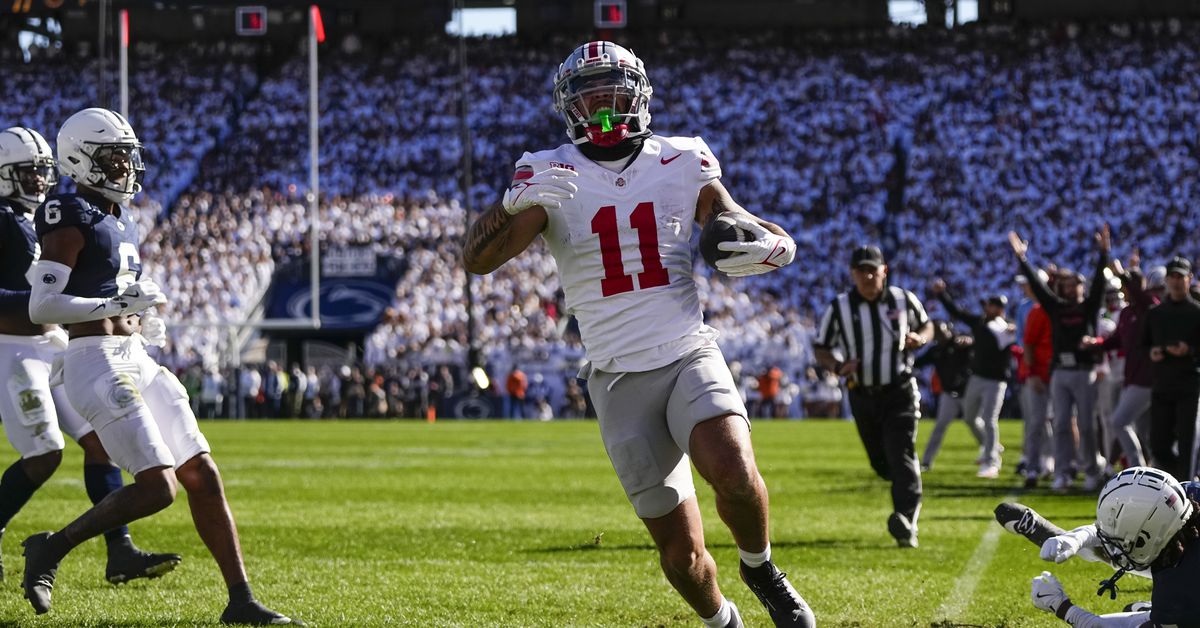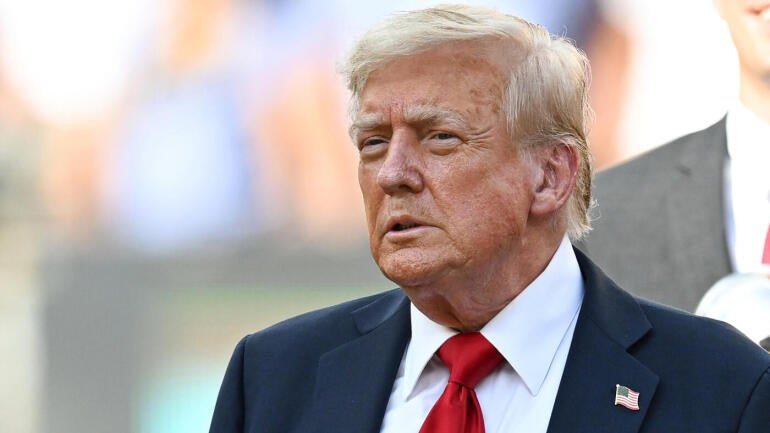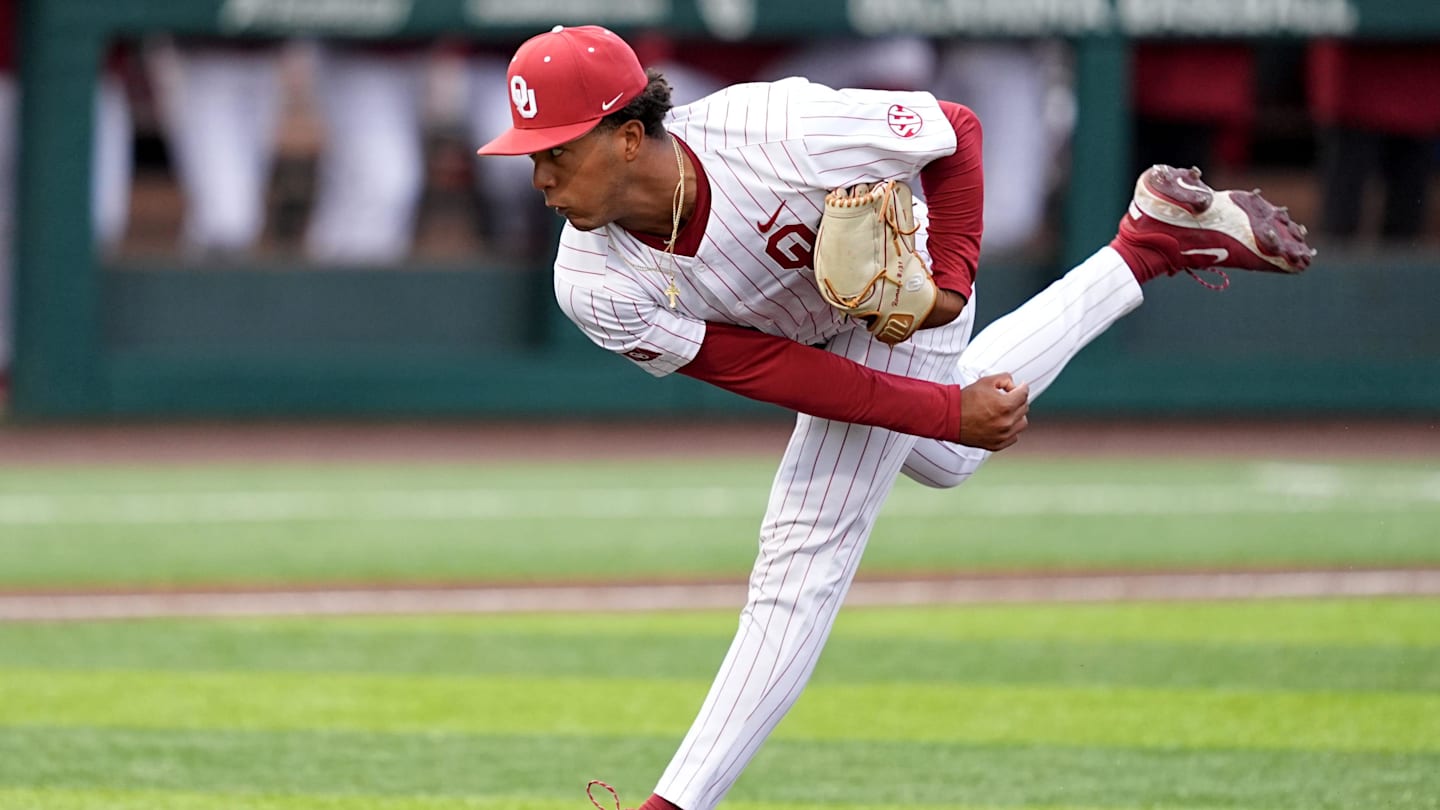NIL
What is your most unpopular opinion on college athletics?
From now until preseason camp starts in August, Land-Grant Holy Land will be writing articles around a different theme every week. This week is all about unpopular opinions. You can catch up on all of the Theme Week content here and all our “Unpopular Opinion” articles here. We all have some opinions that make people […]

From now until preseason camp starts in August, Land-Grant Holy Land will be writing articles around a different theme every week. This week is all about unpopular opinions. You can catch up on all of the Theme Week content here and all our “Unpopular Opinion” articles here.
We all have some opinions that make people raise an eyebrow. It could be about sports, entertainment, or politics. Since you came to an Ohio State sports website, luckily you won’t have to deal with any opinions on politics. Instead, we are going to reveal our most unpopular opinions on college athletics. When we say unpopular, we don’t mean hurtful; more so, we mean opinions that are a bit unconventional.
When it comes to college athletics, there are plenty of areas to dive into. NIL, the Transfer Portal, how many teams should be included in the College Football Playoff/NCAA Tournament, and rules of the game and how they are interpreted are just the tip of the iceberg of areas that grind the gears of some people. Today, we don’t really need solutions to your unpopular opinions, since in many cases those fixes can be very complicated, we just want to know some things about college athletics that may be popular with others that have gotten under your skin.
Today’s question: What is your most unpopular opinion on college athletics?
We’d love to hear your choices. Either respond to us on Twitter at @Landgrant33 or leave your choice in the comments.
Brett’s answer: The Transfer Portal
Just to be clear, I’m not saying that I don’t think college athletes should be able to transfer. Having to wait a year to play after transferring was a bit ridiculous, especially when college coaches could move to another coaching position and not have to wait to coach. I don’t think that the transfer portal is currently utilized is what those in charge had in mind when they made it easier for student-athletes to transfer. Now you are seeing some college athletes transfer three or four times during their college career. At the very most, I think college athletes should be able to transfer twice during their college careers.
:no_upscale()/cdn.vox-cdn.com/uploads/chorus_asset/file/26007929/2197868658.jpg)
Photo by Todd Kirkland/Getty Images
I have no issues with what Will Howard did. He spent a lot of time at Kansas State and then came to Ohio State to close out his college career. I can’t say the same about Dillon Gabriel. After starting his career at UCF, he transferred to Oklahoma, followed by a spot at Oregon for the final season of his college career. It just seems odd to me that a college athlete can play for three different schools. I understand that he had a redshirt season due to an injury and a COVID year, but even with those, it’s hard to believe that things were so bad at times that he needed to transfer twice during his college career.
Things feel even worse when it comes to basketball. Usually, in the fall before the college basketball season begins, I need to take a crash course to remember who is playing where now. Then, just as soon as fans are getting used to having a player on their team, they have moved on to greener pastures. After transferring out of Auburn following the season, Chad Baker-Mazara is now playing for his fifth team, with four of them being at the Division I level.
That just seems crazy to me. As soon as you become comfortable with players, coaches, and a school, players are hitting the portal. At Ohio State, Aaron Bradshaw and Sean Stewart transferred to Columbus following their freshman season, and now both are elsewhere after spending one year with the Buckeyes.
I guess this is just how the world is these days. Our attention spans have become so short that it’s easy to see why college athletes are so quick to jump to a new school. Ohio State’s 2024 football season was so special because you had a bunch of players who were Buckeyes their whole college careers, finally getting to the top of the mountain after a number of close calls.
As the years go on, it feels like we’ll see less of that just because college athletes are constantly on the move these days, and there are no signs of it slowing down anytime soon.
Matt’s answer: College football should adopt relegation
On the Land-Grant Podcast Network this week, I spoke to The Athletic’s Editor in Chief for college football, Stewart Mandel. He ran me through some of the ridiculous proposals that the SEC and Big Ten commissioners are seemingly pushing for the next round of College Football Playoff tweaks.
While nothing has been decided, and Mandel notes that the seemingly disastrous proposals could just be a negotiating tactic (and a much more sane plan does appear to be gaining traction), but it got me thinking.
If the CFP were to go with a more robust automatic bid process, similar to what happens in the UEFA Champions League, where participants are determined solely by their finish in their respective home country leagues. In that case, college football should also adopt one of the aspects that makes European soccer so exciting: relegation.
Say, the B1G and SEC’s plan to expand the playoff to 14 teams goes through and the two power conferences get four autobids apiece, then two each for the ACC and Big 12, and the Group of 5 would get one. That would mean that conference rankings would determine the vast majority of playoff spots, rendering non-conference play irrelovent.
So, if the goal is to pick the best teams based on how they play in their league, then we should do everything possible to make sure that the play in those leagues is at the highest possible level.
For example, the Purdue Boilermakers finished 0-9 last season in B1G play. Due to that, they should be relegated to Big 12. They still have a chance at two AQ spots in the playoffs, but not the four afforded the Big Ten. Conversely, SMU went 8-0 in the ACC, so they would be bumped up to the SEC for this season, giving them an even better shot at a playoff berth, despite the stiffer competition.
This would also work at the lower levels. Army was 8-0 in the AAC last season, so the Black Knights would become members of the ACC for this season, and the 0-9 Oklahoma State Cowboys would be relegated out of the Big 12 and into Comferemce USA.
If the goal — as it would seem to be by this playoff berth proposal — is to emphasize conference performance, then the entire college football system should do everything in its power to keep those conferences competitive and interesting. Suddenly, the end of the season is important for the teams at the bottom of the barrel.
The 2024 version of Mississippi State would have been relegated out of the SEC thanks to its 0-8 conference record, but would the coaching staff and players approached the last month of the season differently if they knew relegation was on the table?
Sure, there would be things that would need to be worked out, including a team like Florida State who went 1-7 in the ACC last season; once the ‘Noles realize that their season is essentially done, would they tank to get bumped down into a conference with an easier path to a playoff berth? Not if you institute the rule that a team who gets relegated can’t go to the playoff the following year!
Regardless of what future playoff system the college football powers that be come up with, the entire landscape of the sport will be different, and they need to embrace more forward-thinking, innovative ways to keep the sport compelling to fans. I don’t know if relegation would work or not, but what I definitely don’t want is for the beautiful, chaotic sport that college football is to become another cold, cookie-cutter version of pro sports in America.
So, if that means we’ve got to kick some teams out of conferences every year, I’m all for it.
NIL
Alabama’s New Era Contends With NIL—and Nick Saban Rumors
Alabama’s New Era Contends With NIL—and Nick Saban Rumors Privacy Manager Link 0

NIL
2025-26 Mountaineer Kids Club Memberships Now On Sale
Story Links MORGANTOWN, W.Va. – Mountaineer Kids Club (MKC), presented by Crumbl Cookie, memberships are now available for the 2025-26 WVU Athletics season. The MKC is a great way for young Mountaineer fans to get involved in WVU Athletics and show off their Mountaineer pride all year long! Memberships […]

MORGANTOWN, W.Va. – Mountaineer Kids Club (MKC), presented by Crumbl Cookie, memberships are now available for the 2025-26 WVU Athletics season. The MKC is a great way for young Mountaineer fans to get involved in WVU Athletics and show off their Mountaineer pride all year long!
Memberships are $35 per child and can be purchased HERE. All memberships purchased online will be mailed to the address provided on your account unless otherwise noted. Membership packs will be mailed out beginning September 1.
Membership Benefits:
- Member Pack
- Official credential, lanyard, t-shirt, sunglasses, sticker sheet, wall flag and more!
- Ticket Deals
- FREE admission to all WVU regular-season home men’s soccer, women’s soccer, volleyball, women’s basketball, gymnastics and wrestling
- FREE ticket in the Family Fun Zone for the WVU football vs. RMU on Aug. 30 with the option to purchase additional tickets at a discounted rate.
- FREE ticket to a future Men’s Basketball game.
- FREE ticket to a future Baseball game.
- One free concession item coupon valid at any regular-season home game except football or men’s basketball
- Exclusive ShopWVU.com discount code for 15% off a single order
- A subscription to the monthly newsletter.
For more information, visit WVUsports.com/KidsClub and follow Mountaineer Kids Club on Facebook and X for up to date information (@WVUMKC).
NIL
Johnny Manziel Says He Would’ve “Stayed In College Longer” Had NIL Existed
With the astronomical rise of name, image, and likeness (NIL) deals amongst college athletes, many football players have seen themselves receiving extensive financial gain, even before they reach the professional level. With as much as the young stars are reeling in, you can only wonder how much college football stars in past decades would have […]
With the astronomical rise of name, image, and likeness (NIL) deals amongst college athletes, many football players have seen themselves receiving extensive financial gain, even before they reach the professional level.
With as much as the young stars are reeling in, you can only wonder how much college football stars in past decades would have made under today’s statutes.
Among those you might wonder about is former Texas A&M quarterback Johnny Manziel.
He wasn’t called “Money Manziel” for no reason.
After all, he was even suspended for the first half of the 2013 season opener against the Rice Owls after allegedly receiving payment for an autograph session earlier in the year.
But the quarterback out of Kerrville, TX believes that had NIL deals been around in the early 2010s, when he was playing in College Station, he would’ve made much more than he did in the NFL, and he would have stayed at A&M longer as well.
“I would have taken a pay cut had I gone to the NFL,” Manziel told Greg McElroy in an interview. “I think no matter what, being in the NIL era, if that would have been the equivalent of 2013, I would have stayed no matter what. Just because a couple million bucks in College Station goes a really, really long way. And you go to the NFL, you’re a first-round pick, you sign for $10 million or whatever it is, that’s the two years that I had remaining at Texas A&M, to be able to make through an NIL deal.”
“So, I think for me, when I think back about it now, if there had been any real money involved, I definitely would have stayed there no matter what.”
As we all know, Manziel’s professional career was none like his time on the field in College Station.
After being drafted 22nd overall by the Cleveland Browns in the 2014 NFL Draft, Manziel’s tumultuous time, including off-the-field issues that carried over from college, resulted in him being released not even two years into his contract.
And after equally forgettable years in the Canadian Football League with the Hamilton Tiger-Cats and Montreal Alouettes, and also in the short-lived Alliance of American Football, Manziel quietly retreated from the game of football, but is still seen at many Texas A&M athletic events both in College Station and on the road.
But the “what if” game could be played with “Johnny Football” all day, especially regarding NIL deals, and if his career had shaped out better had he been properly compensated for his elite play on the gridiron.
NIL
President Donald Trump to sign executive order establishing national NIL standards amid evolving legislation
Getty Images President Donald Trump plans to sign an executive order establishing national standards for name, image and likeness initiatives, according to CBS News. Within the past week, members of the U.S. House of Representatives introduced an amended bill called the SCORE Act (Student Compensation and Opportunity through Rights and Endorsements) aiming to “protect the […]


President Donald Trump plans to sign an executive order establishing national standards for name, image and likeness initiatives, according to CBS News. Within the past week, members of the U.S. House of Representatives introduced an amended bill called the SCORE Act (Student Compensation and Opportunity through Rights and Endorsements) aiming to “protect the name, image, and likeness rights of student-athletes to promote fair compensation with respect to intercollegiate athletics, and for other purposes.”
The bill could open the door for federal standards for NIL legislation, superseding the current state laws that provide guidance on player compensation.
SEC commissioner Greg Sankey said Wednesday during an appearance on “SEC This Morning” that he had no knowledge of a pending executive order.
“The President clearly has an interest in sports, big picture, has an interest in college sports,” Sankey said. “He has been at our games. The notion of an executive order has been mentioned before. There were some reports of a commission or an executive order back to like, April, I think, is when that started to bubble. So we’ll wait and see … I don’t have any inside information about what generated those reports late last evening.”
Trump has shown a keen interest in college athletics in the early months of his second term. In May, reports emerged that Trump intended to create a college sports commission, headed by prominent Texas Tech booster Cody Campbell and legendary former coach Nick Saban, that would investigate pressing issues such as NIL reform; however, the White House put those plans on hiatus. A completely unrelated College Sports Commission (CSC) was created in the wake of the House v. NCAA settlement, which opened the door for athletes to profit off of revenue sharing.
The CSC, in partnership with consulting firm Deloitte, launched an online portal called “NIL Go,” where athletes can report third-party NIL deals to ensure that they match “fair market value” and include a valid business purpose based on an actual endorsement.
NIL
President Donald Trump to sign executive order establishing national NIL standards amid …
Getty Images President Donald Trump plans to sign an executive order establishing national standards for name, image and likeness initiatives, according to CBS News. Within the past week, members of the U.S. House of Representatives introduced an amended bill called the SCORE Act (Student Compensation and Opportunity through Rights and Endorsements) aiming to “protect the […]



President Donald Trump plans to sign an executive order establishing national standards for name, image and likeness initiatives, according to CBS News. Within the past week, members of the U.S. House of Representatives introduced an amended bill called the SCORE Act (Student Compensation and Opportunity through Rights and Endorsements) aiming to “protect the name, image, and likeness rights of student-athletes to promote fair compensation with respect to intercollegiate athletics, and for other purposes.”
The bill could open the door for federal standards for NIL legislation, superseding the current state laws that provide guidance on player compensation.
SEC commissioner Greg Sankey said Wednesday during an appearance on “SEC This Morning” that he had no knowledge of a pending executive order.
“The President clearly has an interest in sports, big picture, has an interest in college sports,” Sankey said. “He has been at our games. The notion of an executive order has been mentioned before. There were some reports of a commission or an executive order back to like, April, I think, is when that started to bubble. So we’ll wait and see … I don’t have any inside information about what generated those reports late last evening.”
Trump has shown a keen interest in college athletics in the early months of his second term. In May, reports emerged that Trump intended to create a college sports commission, headed by prominent Texas Tech booster Cody Campbell and legendary former coach Nick Saban, that would investigate pressing issues such as NIL reform; however, the White House put those plans on hiatus. A completely unrelated College Sports Commission (CSC) was created in the wake of the House v. NCAA settlement, which opened the door for athletes to profit off of revenue sharing.
The CSC, in partnership with consulting firm Deloitte, launched an online portal called “NIL Go,” where athletes can report third-party NIL deals to ensure that they match “fair market value” and include a valid business purpose based on an actual endorsement.
NIL
Every Oklahoma player selected in 2025 MLB Draft
Oklahoma baseball coach Skip Johnson sent even more players to the pros with eight Sooners getting selected in the 2025 MLB Draft this week. OU’s eight picks were tied for the fourth-most among all schools. Since Johnson took over the OU baseball program in 2018, 48 players have been taken in the MLB Draft. Four […]

Oklahoma baseball coach Skip Johnson sent even more players to the pros with eight Sooners getting selected in the 2025 MLB Draft this week. OU’s eight picks were tied for the fourth-most among all schools.
Since Johnson took over the OU baseball program in 2018, 48 players have been taken in the MLB Draft. Four of those selections were first-round picks, including Kyler Murray (2018), Cade Cavalli (2020), Cade Horton (2022), and most recently, Kyson Witherspoon on Monday.
All-time, 315 Sooners have went in the MLB Draft.
Here’s a look at every Sooner drafted this year, plus there was OU signee Eli Willits, who went No. 1 overall to the Washington Nationals.
8 Sooners drafted to MLB
OU ace Kyson Witherspoon was the first Sooner off the board at 15th overall to the Boston Red Sox after being one of the best pitchers in college baseball last season. He was a consensus First-Team All-American, Golden Spikes Award semifinalist and All-SEC First Team honoree this year after finishing with a 2.65 ERA and 10-4 record as a starter.
Shortly after Kyson, his twin brother, Malachi, followed as a second-round pick to the Detroit Tigers. Malachi struggled some last season with a 5.09 ERA and 4-8 record as a weekend starter, but he was an MLB prospect since high school and maintained that stock.
Kyson and Malachi could become the first set of twins to make the MLB after being drafted the same year since 1996. The last duo to do it was Ryan and Damon Minor, also from OU.
Catcher Easton Carmichael was third and final Sooner off the board on Day 1 of the MLB Draft, which was tied for the most picks in the first three rounds in program history. Carmichael had become a staple in OU’s lineup and behind the plate as a two-time All-American.
It was only the fourth round, and Cade Crossland was already OU’s third weekend starter headed to the pros. This past season, Crossland had a 6.02 ERA and 5-4 record during his only year in Norman.
Now headed to the San Diego Padres, James Hitt was consistent out of the bullpen for the Sooners last season with a 3.82 ERA in 28 relief appearances.
Sooner Nation didn’t get to see much of Dylan Tate after an injury plagued his lone season in Norman. He was solid in the postseason, though, once he was finally healthy, giving up just one run in five innings.
Dylan Crooks was a hammer as OU’s closer this past season with 16 saves and was named an All-American. He was also a finalist for NCBWA Stopper of the Year. The Rockies could have found their future closer way down in the 15th round.
Brandon Cain just got to OU in 2025 as a transfer. He was a two-way player and got time at both outfield and on the mound. The Pirates drafted him as a right-handed pitcher.
Read more about OU baseball
-

 Technology3 weeks ago
Technology3 weeks agoPet fitness and wellness trends for a healthier and happier dog
-

 College Sports3 weeks ago
College Sports3 weeks agoWAC to Rebrand to UAC, Add Five New Members in 2026
-

 College Sports3 weeks ago
College Sports3 weeks agoA new era of Dickinson hockey begins behind the bench – The Dickinson Press
-

 Motorsports2 weeks ago
Motorsports2 weeks agoWhy Cosmetics are Making Up for Lost Time in Women’s Sports
-

 Motorsports2 weeks ago
Motorsports2 weeks agoTeam Penske names new leadership
-

 Sports1 week ago
Sports1 week agoNew 'Bosch' spin
-

 Motorsports3 weeks ago
Motorsports3 weeks agoNASCAR This Week – Patriot Publishing LLC
-

 Youtube2 weeks ago
Youtube2 weeks ago🚨 BREAKING: NBA MVP Shai Gilgeous-Alexander signs the RICHEST annual salary in league history
-

 Sports1 week ago
Sports1 week agoE.l.f Cosmetics Builds Sports Marketing Game Plan Toward Bigger Goals
-

 College Sports2 weeks ago
College Sports2 weeks agoMSU Hockey News – The Only Colors




























